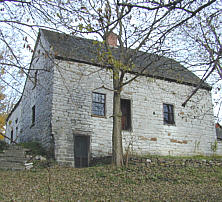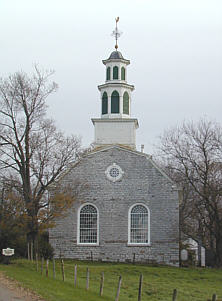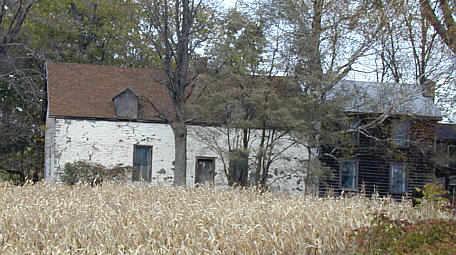FORT KLOCKNEW YORK |
 |
FORT KLOCKNEW YORK |
 |

Fort Klock was built in 1750 by Johannes Klock, a Palatine German. It was home to his sons, Jacob Klock, commanding officer of the Palatine Regiment of the Tryon County Militia during the Revolutionary War.
Three years after Oriskany, Sir John Johnson and Joseph Brant led another one of their devastating raids on the Mohawk Valley in October of 1780. This one is referred to as the Great Raid of 1780 because of the destruction they caused and the lives lost.
While area residents sought the shelter of Fort Klock, Johnson and Brant setup a line of battle between Fort Klock and St. Johnsville.
The American forces under the command of General Robert Van Rensselaer charged the enemy position and after a short skirmish, the raiders fled in an utter rout. The American forces began to pursue the retreating enemy, but after Van Rensselaer called back his forces, most of the raiders escaped westward.
 |
Klock Fort The Stone dwelling 500 feet south was built by Johannis Klock in 1750 and was used as a fort and place of refuge during the Revolutionary War. The “Battle of Klock’s Field” was fought near here to the west. This tablet placed Aug. 25, 1927 by the Klock Family Association in memory of the ancestors who toiled, served and sacrificed in this Mohawk Valley. (Fort Klock Marker) |
The Battle of Klock’s Field was the end of the Great Raid of
1780. There are several upcoming sites on this Revolutionary War Road Trip that
were affected by the Great Raid.
Palatine Church -- After scattering the British forces under Johnson and Brant at Fort Klock, Van Rensselaer setup camp near the Palatine Church. He was later court-martialed in Albany for his failure to pursue the enemy but was acquitted.
 |
Palatine Church Lutheran, founded 1749, erected 1770. The shrine of Lutheranism in the Mohawk Valley. (Palatine Church Marker) |
Fort Wagner -- During the Revolution, the house was surrounded by logs to form a stockade. It became a neighborhood refuge during the Indian and Tory raids.
 |
|
Fort Wagner Stone section of house was stockaded home of Lt. Col. Peter Wagner, Palatine Regt. Tryon County Militia, 1750. NY State Historical Marker (Mohawk Turnpike Marker) |
